Writing digital marketing ad copy isn’t as simple as it used to be. With more businesses than ever using social media platforms to promote their brand, your ads are competing against the best of the best across more and more channels. And as every business owner knows, just throwing up some pictures and a quick sentence or two isn’t going to cut it in our digital world.
Luckily, we are here to show you how to take your flat text and turn it into something powerful that will keep your customers coming back for more. These ten tips are an excellent place to start when writing ad copy for any social media platform, from Instagram to Facebook to Twitter, etc. There’s an art to writing good social media ad copy, but it’s also a skill you can learn with a little knowledge and practice.
1. Research and Understand Your Audience
Know your audience and write specifically for them; you need to know what your prospect marketplace is thinking and find a way to address that. Social media ads are about attracting and engaging potential members, but there’s more to it than that. From the customer’s point of view, each ad should answer the following four questions:
- What is the brand/product?
- Why is this product/brand for me?
- How can I benefit from the brand/product?
- Where can I find it?
By targeting these questions, you will inherently narrow down your copy to fit the mold of a specific group of people with those needs.
Ad Copy Example #1 – Know Your Audience
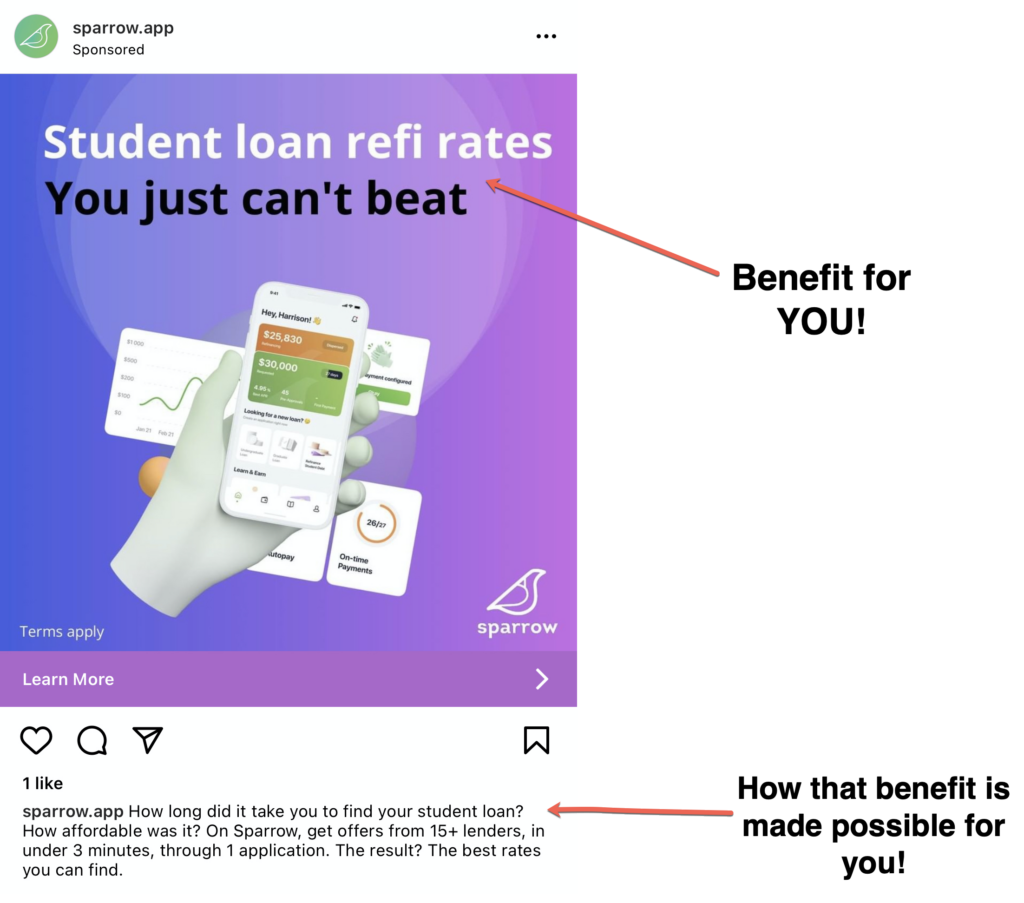
In the example above, the ad is targeted at students looking for the best student loan refinance rates. The ad image clearly states who will benefit from this product, and the ad copy defines why the target audience needs this product, how it will benefit them, and lastly, how they can capitalize on the offer with a call-to-action (CTA).
2. Solve a Problem For Your Customer
Whenever you write an ad, it’s your job to remove all barriers preventing a potential customer from making a purchase. Put yourself in the user’s shoes and answer this question: What would keep you from clicking an ad, visiting a landing page, filling out a form on the page, or making a purchase?
At every stage, you should include information that potential customers need to make an informed decision. There are many ways to identify the customer’s needs, but the best way is to hear what they have to say. Customers are often more in tune with customer service, quality of a product, or unresolved issues than you might think, so talk to them to know what pain points you should be addressing. Customers are a wealth of information when it comes to knowing what they want. They have suggestions for you and will be honest with you, too.
Make sure there is always a benefit to using your product/service that will solve one of your customer’s pain points. Your ad should never just be about what you offer; instead, you always want to focus on how it benefits the customer. We often recommend the Problem-Agitate-Solve formula. The formula works like this: Identify a problem, analyze that problem, and uncover the solution. Consumers want to hear that you can identify the problem and produce a product or service that can easily solve the problem in their life. You want to communicate how your product or service will help them solve their problem and how they can get in touch with you. This can include re-emphasizing the aspects of your ad’s headline and developing more details on how your service or product will benefit them.
Ad Copy Example #2 – Solve a Problem

This example is a Facebook ad that addresses the problem and solution in the body copy of this ad. The problem: Not reaching the right audience. The Solution: Download our FREE persona guide. By offering this downloadable solution, they are helping consumers become more aware of the mass solution that is accessible via their brand. This ad is an excellent example of a subtle Problem-Agitate-Solve formula in action.
3. Keep Ad Copy Short
The average user scrolls for 75% of the time they are on each social media app, just like when in a store shopping; for a consumer to stop and take a look at an individual item, it needs to catch their eye while scanning. That doesn’t always mean that you need to make your shirts hot pink, but that you need to make the shirt appealing enough that they want to take a closer look. A similar thought process goes on when you are drafting ad copy. You may only have a few seconds to get your point across, so it’s important to keep your ad as short and sweet as possible.
What are you more likely to click on: A snappy, amusing message one can relate to or a long-drawn-out paragraph of text explaining the many reasons why this is something you need? Although those points may be valid, the user will not stay long enough to reach the big firework finale. Short ad copy is essential today, where attention spans are notoriously lower for people on social media.
Each platform has various character limits that you should cater your ad copy to. It’s important to note that you do not need to use all of the characters you are given; less is generally more. Making sure your ad copy is an appropriate length for the designated platform it’s on can improve your chances of getting people to read or engage with your posts. To make your job a little easier, we’ve put together a cheat sheet on social media character limits and ideal post lengths.
| Social Media Platform | Ad Copy Character Recommendations |
|---|---|
| 150 characters | |
| 280 characters | |
| 150 characters | |
| 125 characters |
Ad Copy Example #3 – Short Ad Copy

This is an excellent example of ad copy that is short, sweet, and to the point. Amazon knows its target audience is already interested in outdoor furniture, so the goal is primarily to get more eyes on what they have available. This ad focuses on the images of each product (what the users truly care about) and gives a brief explanation of what they are looking for and how they can get the product by shopping now.
4. Have a Clear Call to Action (CTA)
A CTA (Call to Action) prompts your audience to complete the desired action on your ad. An attention-grabbing CTA button can accomplish a lot – it can entice audiences to respond to your ads and buy your products, as well as tell people what will happen after they click. It can even maximize traffic, pull a conversion, or get a prospect to download. After testing, our team has concluded that including a CTA button on the ad and promoting a direct action in the ad copy will offer you the highest conversion rates on your ads. By including a call to action in your ad copy, you are clearly telling the user how to get from Point A (I want X) to Point B (I now have X).
A great real-life example of this would be asking your friend for drinks. While showing them a picture of an ice-cold margarita may entice them, including the phrase “Let’s go get these margaritas at the Mexican restaurant down the street” will solidify their desire and steer them to the action of doing so.
Ad Copy Example #4 – CTA

This ad copy is an excellent example of a direct CTA. This shows what they need to do to complete the action, which in this case is download, and what they will receive when completing the action.
5. Utilize Visuals to Aid Your Ad Copy
Ad copy can’t carry the team. Ad copy is just one part of the intricate process of paid campaigns on social platforms. It is critical that you use images and or videos that work in tandem with your ad copy. For one to succeed, they need the other.
One of the most extensive recommendations we give clients when they send us new creative for an ad campaign is WHY? Why this photo? What story does this photo tell the user? The image or video is the first thing that a user sees when scrolling, and it is imperative that the graphic tells the product’s story.
Many digital marketers think that text on an image is bad, but approximately 20% of your ad image can contain text, according to the image text rule. This will help guide the consumer through the user journey, almost like giving them a sneak peek of the good stuff before diving deep into the ad copy or landing page.
Ad Copy Example #5 – Visuals

This is an excellent example of an ad gone wrong. When a user scrolls past this ad, it does not tell the user WHY. Why am I being shown this ad, and how can it benefit me. This leaves the user confused about what this brand is and ultimately means the user probably kept scrolling and potentially missed out on a product they needed.
6. Creatively Use Emojis
These days, people rely on emojis for all of their social media communication. As we have said before, the goal is to stand out, and emojis can help you do that. Over 90% of consumers use emojis in their daily lives, which means they may be more privy to them when seeing them in ads. Emojis have the ability to express mood and tone of voice via online messaging. Even further, it seems that we as users even change our expression when we look at an emoji. Emojis have a way of changing the tone of a sentence without using additional words. For example:
- Wow, that shirt is cool ????
- Wow, that shirt is cool ❤️
- Wow, that shirt is cool ????
Although the text is the same for these three sentences, the different emojis dramatically change the tone and attitude of each sentence.
Emojis are a great way to get creative with your ad copy. However, as a word of caution, remember that less is more. You want to find a balance between using them to get the mood across without overwhelming the user with too many emojis.
Ad Copy Example #6 – Emojis
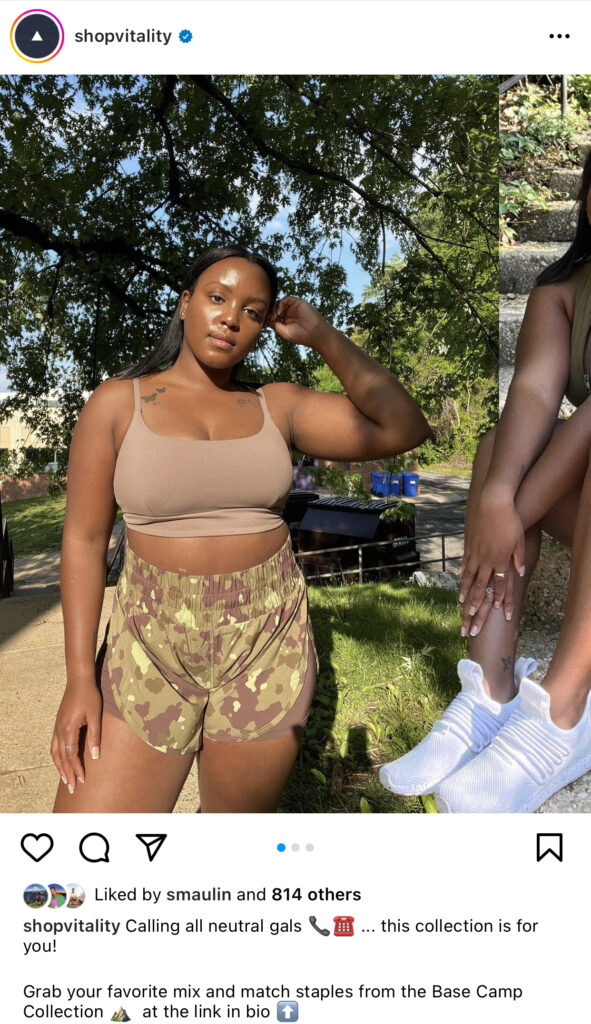
7. Use a Consistent Brand Voice & Tone
Brand consistency is a phrase we often hear in marketing, and it is just as important with paid social ad copy. The foundation of branding is not only your company logo and colors but also your tone of voice, which needs to be instantly recognizable across all marketing channels. These days, brands have to maintain a consistent presence on their website, Facebook, Linkedin, Twitter, Instagram, and various other communication channels.
A key part of managing your brand voice is to have a clearly definted target audience. Writing effective ad copy becomes much easier when you know who you are talking to. s. Understanding your target audience will help you define your tone of voice, jargon, personas, and syntax. All of these elements will create your unique “brand.”
Many companies create an entire personality through their social media, for example, Wendy’s, which became a talking point on the brand itself. Wendy’s social media brand presence has come to represent who they are and has become a public relations move for the company and thier marketing team. Creating a character through your social media makes your brand more relatable (foreshadowing) and develops more consistency across platforms.
Ad Copy Example #7 – Brand Voice & Tone
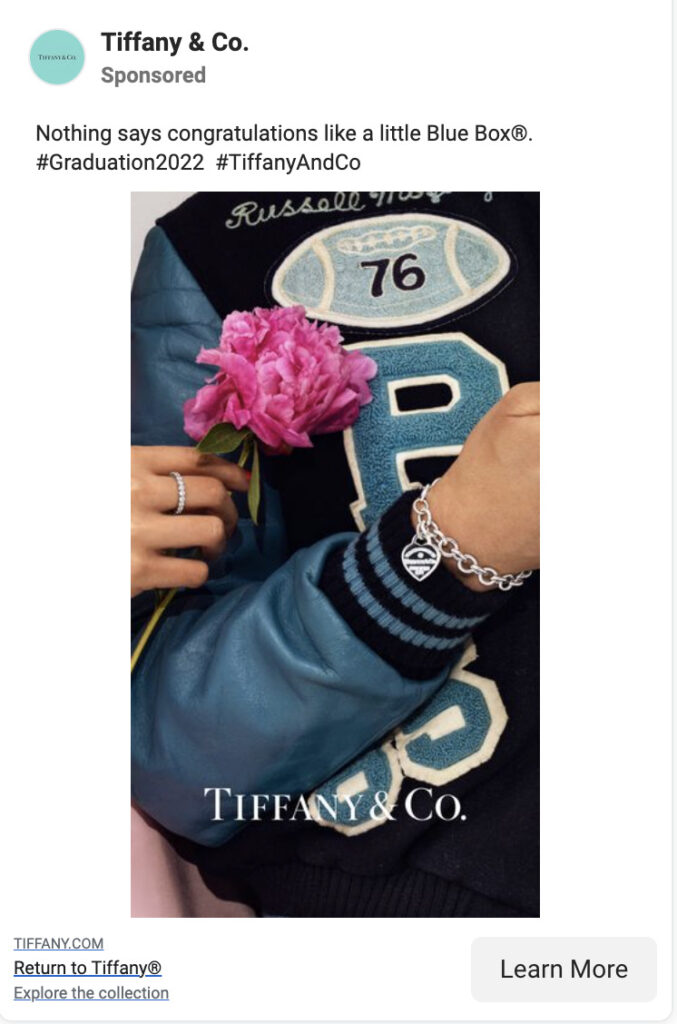

Tiffany & Co’s voice is elegant, classy, and sophisticated which you see reflected in their ad copy across all social media platforms. They almost never use exclamation points or emojis and keep their ad copy short and to the point with minimal hashtags. In unison with their ad copy, they also utilize high-quality images of their products with simple backgrounds and frequently partner with celebrities. Keeping this consistent voice and tone throughout their ads allows customers to instantly recognize Tiffany & Co’s brand regardless of the platform as well as solidify what that brand is.
8. Be Conversational and Relateable
In order to have a productive dialogue with your customers on social media, you need to be conversational. You should always try to relate your message to the interests of your customers and acknowledge the events happening around the world. Be informative and answer any questions or concerns they may have about a product or service in a straightforward way. After all, if you can’t help a customer on social media, you’re not going to be able to help them in person either. If you make your audience feel like they are being sold to, it will turn them off. The best way to do that is by making sure that every word in your ad copy has meaning and purpose. If it doesn’t, then it needs to go.
We recommend trying to be relatable by being a friendly voice of reason rather than a salesperson. By using conversational phrases and relating to the interests of your target audience they will feel more comfortable spending money and your brand and feel confident coming back again and again.
Pro Tip: Utilize the ability to interact with your customers. Ask open-ended questions and use those to better your product or brand. These questions help your customers open up and share their experiences with you in order to build a better relationship. Once they feel comfortable doing so, they’ll be more likely to buy from you in the future.
Ad Copy Example #8 – Conversational

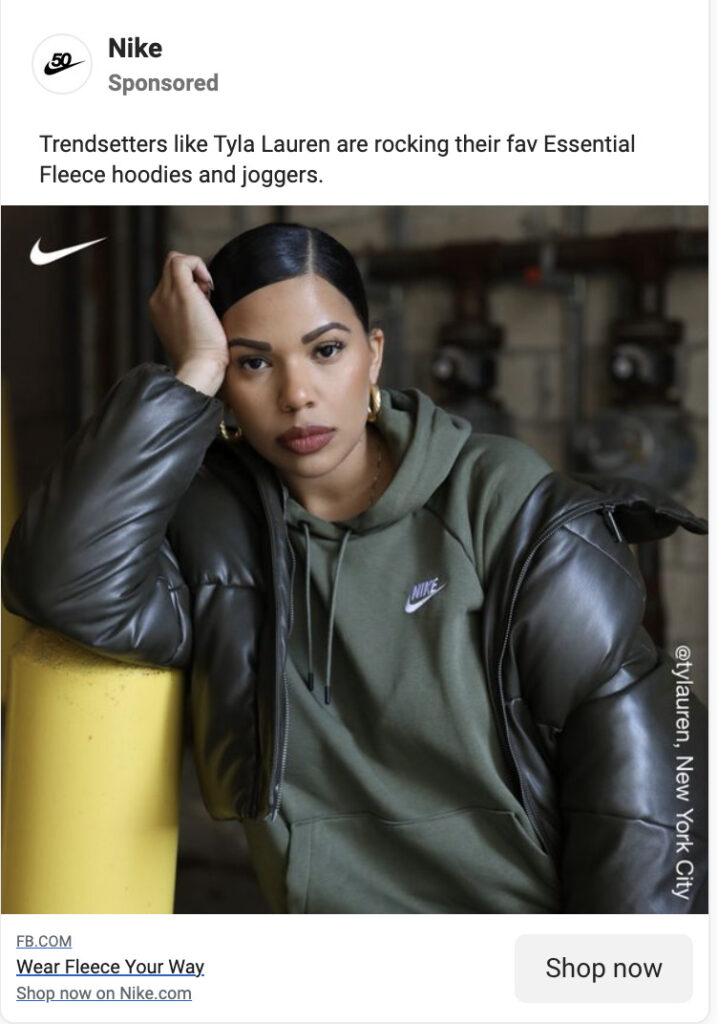
Nike has been in the hierarchy of relatable brands since the beginning of time. They use a large platform to speak on subjects that are happening around the world. Although Nike does a tremendous job speaking on the heavier subjects, they also frequently talk about the everyday trends we see in fashion. The examples below show Nike’s ability to choose specific and important conversations on social media, which enables Nike to be a part of a larger community and grow their audience.
9. Research Competitor Examples
This may seem obvious, but it’s important to research competing ads. First, it helps us understand what the competition is doing that works and what doesn’t; second, by deconstructing our competitor’s ad copy, we can model ideas to replicate or improve upon their efforts in a new way. The most effective ad copy will be one that truly speaks to your audience—and with social media marketing, your audience has access to a lot more information about you than they would from traditional advertising channels like television or radio. If you want to convert them into customers, you need to speak directly to them using language they understand and appreciate.
Researching competitors and other similar companies give you an instant leg up in understanding what’s working, why it’s working, and how to do it better. What can you learn from your competition? Not only can you see what’s working, but you can also see what isn’t working—and why. By understanding those insights (the why not?), then you have a blueprint to avoid making the same mistakes as your competition.
Ad Copy Example #9 – Competitors
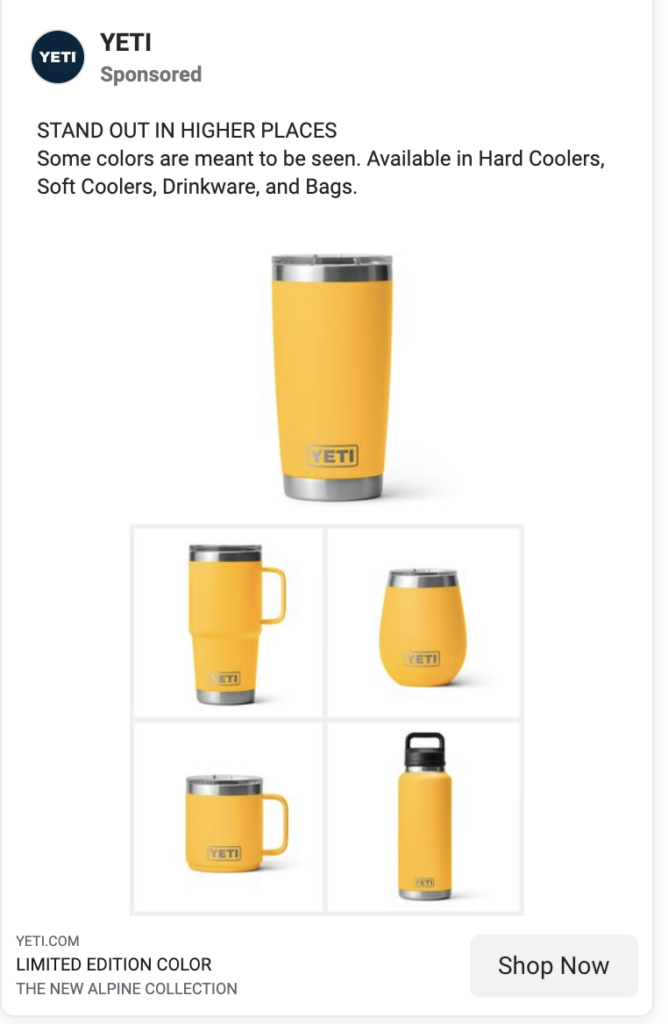
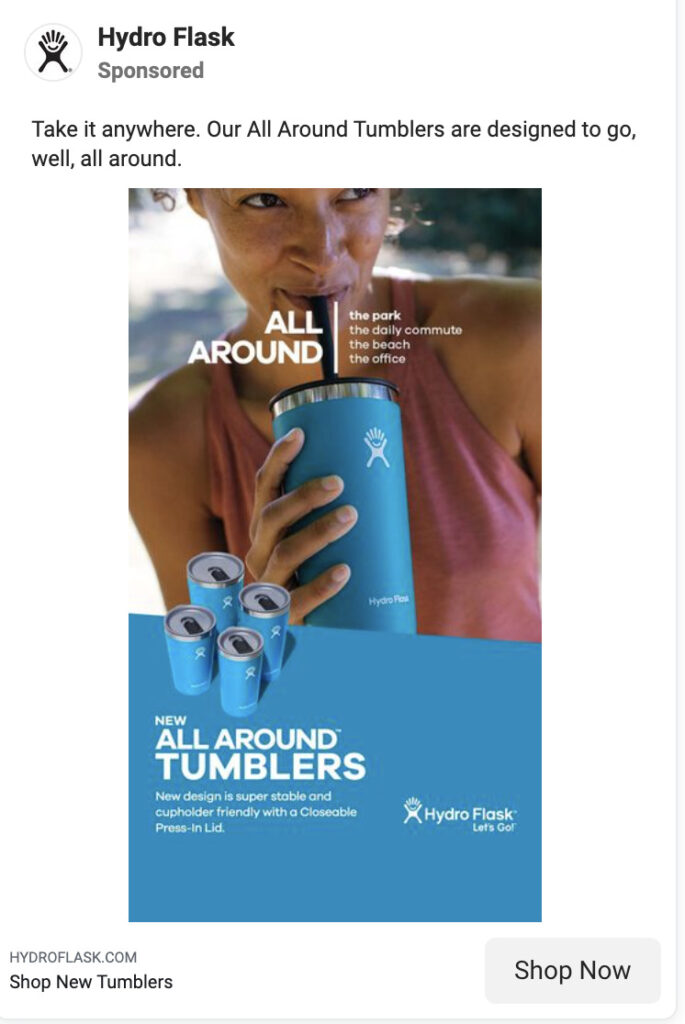
Since Hydro Flask has gone viral, competing companies like Yeti have been attempting to keep up with the trend hydro flask has created. In these examples, both companies produced bright summer closers of tumblers that are versatile to fit many different types of chilled drinks. Although they are both building similar style campaigns, they are adding their own skin on the product and campaign to match their brand and voice and pull consumers from buying from the competing brand.
10. A/B Test Your Ad Copy
A/B testing, also known as split testing, is the process of testing an ad to understand how it performs in relation to a particular goal. This helps you assess your target audience’s response, and you can then optimize future campaigns based on these learnings.
Split testing is one of the most powerful tools to use when you’re trying to improve your ad copy. The goal is to A/B test your ad copy to prove which version of your ad performs better in terms of clicks and conversions. This is the best way to improve your conversion rate and CTRs, both of which will result in more leads and sales over time. Testing is the only way to determine what works with your specific audience, products, and brand. Without thorough testing, you run the risk of doing what has worked for other brands when in fact, it doesn’t work for you.
Pro Tip: While there are various options for what you can test (Headlines, Primary ad text, In-text CTA, CTA buttons, The length of the ad copy, etc.), we highly recommend focusing on one element at a time. This will give you more defined data on what works for your brand and what doesn’t. Facebook offers a great resource on the best practices for A/B testing on their platform.
Ad Copy Example #10 – A/B Testing
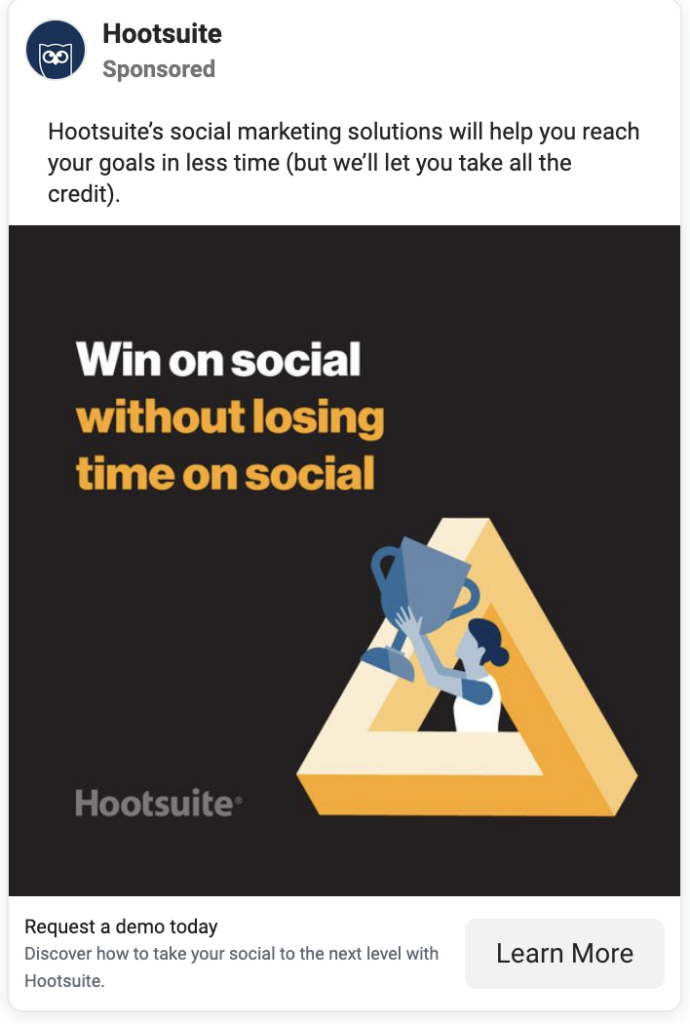
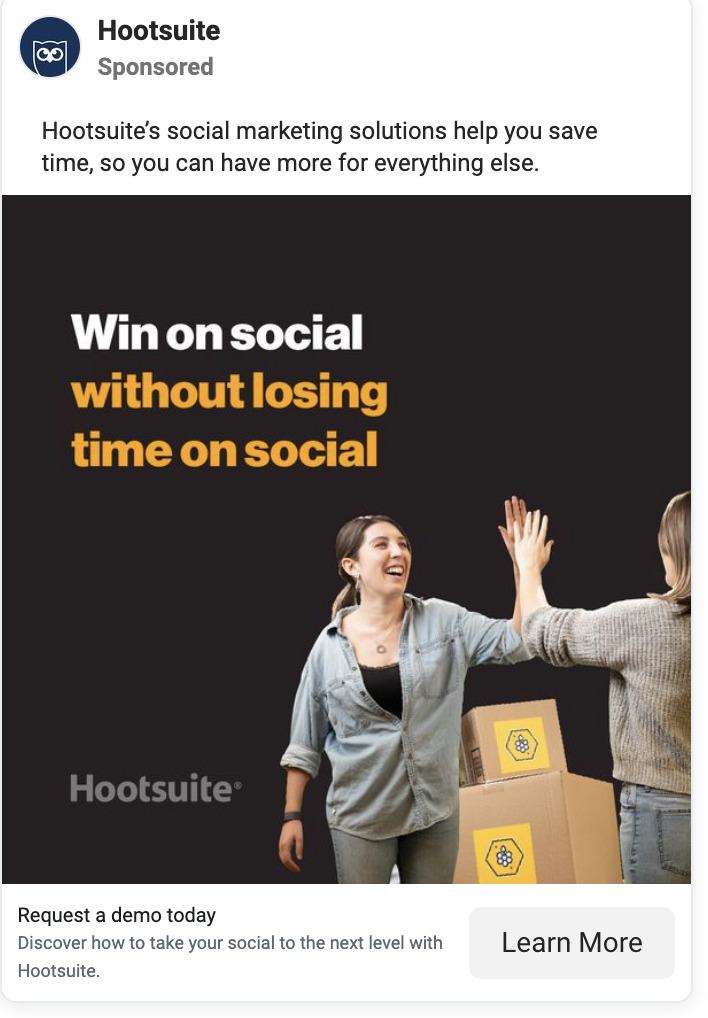
This is an example of a concrete A/B test. The objective was to uncover an audience pain point and solution for visitors. The ad on the left uses the term “reach your goals”, whereas the ad on the right uses the term “save time”. This is targeted to conclude whether the majority of users are looking to use their software to with meet objectives or preserve time. Using the analytical data at the end of this a/b test will help marketers determine what pain points the ads need to emphasize.
Wrap Up
To summarize, copywriting is an ongoing process, and a good enough first draft isn’t good enough. You need to be changing and improving your ad copy constantly. By following these recommendations, you will be simultaneously making your social media content more accessible for users and working towards creating a more well-rounded marketing stack for your brand.
Unleash your creativity with our high-converting ad copy tips. When you follow the steps outlined above, you’ll be primed to develop the best ad copy for your perfect audience, all while staying true to your own distinctive brand voice.










This extremely superb buddy! Thanks for Sharing this Amazing content.
Thanks for sharing! I appreciate it so much!
Thanks for sharing that information